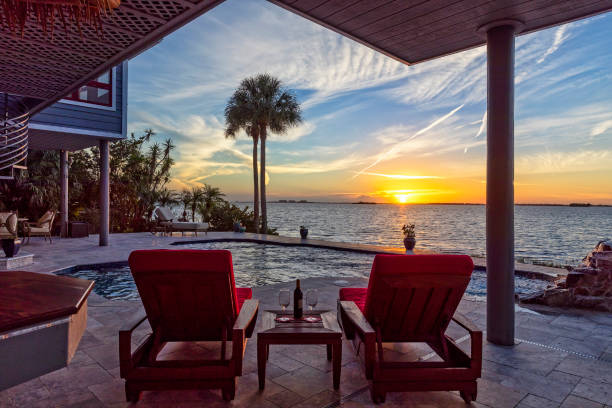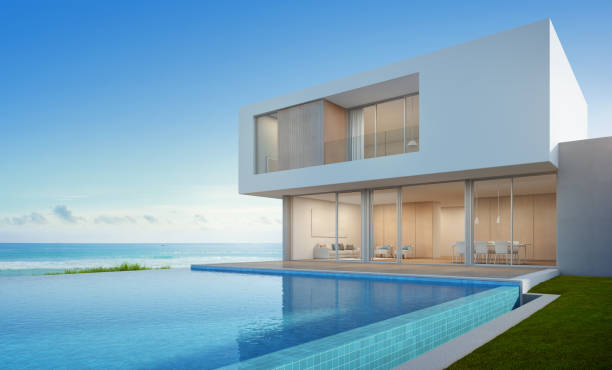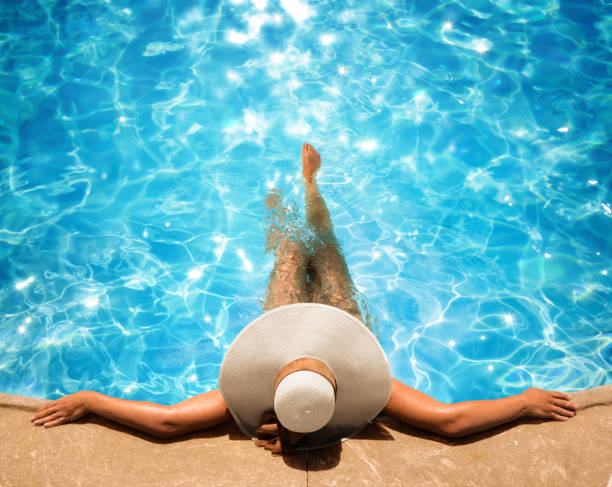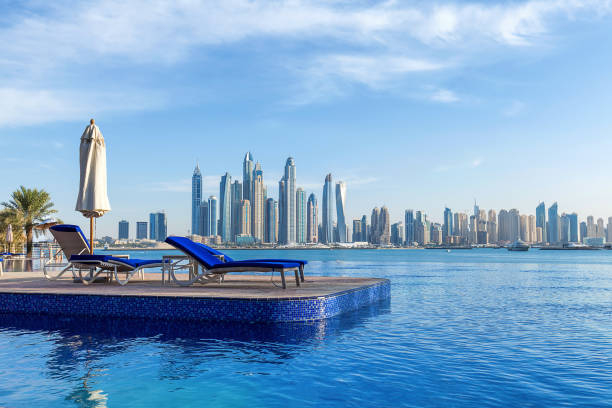Embracing the Essence of Luxury Interior Design
The Evolution of Luxury Interior Design
Luxury interior design has evolved significantly over the years, reflecting changes in tastes, technology, and societal values. Historically, luxury was synonymous with opulence, grandeur, and an abundance of rich materials. Think of the gilded rooms of Versailles or the intricate details of the Renaissance palaces. Today, while opulence remains a key component, modern luxury interior design often emphasizes minimalism, sustainability, and personalized experiences.
Defining Modern Luxury in Interiors
Modern luxury interior design is characterized by a blend of comfort, functionality, and aesthetics. It goes beyond mere decoration, creating spaces that are not only visually stunning but also comfortable and practical. High-end materials, bespoke furniture, and state-of-the-art technology are seamlessly integrated to enhance the living experience.
The Role of Personalization
One of the hallmarks of luxury interior design today is personalization. Homeowners are no longer content with generic designs; they seek spaces that reflect their personality, lifestyle, and preferences. This has led to a surge in demand for custom-made furniture, unique art pieces, and bespoke finishes. Interior designers work closely with clients to understand their vision and translate it into reality, creating spaces that are truly one-of-a-kind.
The Importance of Materials
Materials play a crucial role in luxury interior design. The choice of materials can elevate a space, adding texture, depth, and sophistication. Marble, onyx, and high-quality wood are popular choices for surfaces and flooring, while silk, velvet, and leather are often used for upholstery and soft furnishings. The key is to choose materials that not only look good but also offer durability and comfort.
The Art of Lighting
Lighting is another critical element in luxury interior design. It sets the mood, highlights architectural features, and enhances the overall aesthetic. A well-designed lighting scheme incorporates a mix of ambient, task, and accent lighting. Chandeliers, pendant lights, and sconces add a touch of elegance, while smart lighting systems allow for easy control and customization.
Incorporating Technology
In the realm of luxury interior design, technology is seamlessly integrated to enhance the living experience. From smart home systems that control lighting, temperature, and security, to high-end audio-visual equipment for home theaters and entertainment spaces, technology adds a layer of convenience and sophistication. Designers work to ensure that these technological elements are discreetly incorporated, maintaining the aesthetic integrity of the space.
Sustainability and Eco-Friendly Design
Sustainability has become an integral part of luxury interior design. Discerning clients are increasingly seeking eco-friendly options, from sustainably sourced materials to energy-efficient appliances. Designers are rising to the challenge, creating luxurious spaces that are not only beautiful but also environmentally responsible. This includes using recycled materials, low-VOC paints, and incorporating green building practices.
The Influence of Art
Art plays a pivotal role in luxury interior design, serving as a focal point and adding character to a space. High-end interiors often feature a carefully curated collection of art pieces, from paintings and sculptures to installations and digital art. The choice of art is highly personal and can significantly influence the ambiance of a room. Collaborations with artists and galleries ensure that the art complements the design and enhances the overall aesthetic.
Luxury in Different Spaces
Luxury interior design is not confined to residential spaces. High-end hotels, restaurants, offices, and retail spaces all benefit from the principles of luxury design. Each space has its own unique requirements and challenges, but the goal remains the same: to create an environment that is both functional and visually stunning.
Luxury Residential Interiors
In residential interiors, luxury design often focuses on creating a sanctuary that offers comfort, privacy, and style. Key areas of focus include the living room, kitchen, bathroom, and bedroom. Each of these spaces is designed to provide the highest level of comfort and aesthetic appeal.
Luxury Hotels and Resorts
In hospitality design, luxury is about creating an unforgettable experience. This involves attention to detail, from the grand lobby and elegant guest rooms to the serene spa and exquisite dining areas. The design must cater to the needs of discerning travelers, offering both comfort and a sense of indulgence.
Luxury Offices
Luxury office design combines functionality with elegance. High-end offices feature sophisticated furnishings, state-of-the-art technology, and thoughtful layouts that promote productivity and well-being. The design reflects the brand's identity and creates a positive impression on clients and employees alike.
Luxury Retail Spaces
In retail, luxury design aims to create an immersive shopping experience. This involves using high-quality materials, innovative displays, and personalized services to make customers feel valued and indulged. The design of luxury retail spaces often draws inspiration from art and fashion, creating a unique and memorable environment.
Trends in Luxury Interior Design
Luxury interior design is constantly evolving, influenced by global trends, technological advancements, and changing consumer preferences. Some of the current trends include:
Minimalist Luxury
Minimalism has become a significant trend in luxury interior design. The focus is on simplicity, clean lines, and a neutral color palette, creating spaces that are both elegant and serene. High-quality materials and thoughtful design details ensure that the minimalist aesthetic does not compromise on luxury.
Biophilic Design
Biophilic design incorporates natural elements into the interior, promoting a sense of well-being and connection to nature. This trend includes the use of natural materials, indoor plants, water features, and ample natural light. Biophilic design creates a calming and rejuvenating environment, which is a key aspect of modern luxury.
Smart Homes
The integration of smart technology is a growing trend in luxury interior design. Smart homes offer enhanced convenience, security, and energy efficiency. Features such as automated lighting, climate control, and advanced security systems are becoming standard in high-end interiors. The key is to integrate technology seamlessly, ensuring it complements the overall design.
Sustainable Luxury
Sustainability continues to be a major trend in luxury interior design. Eco-conscious clients are looking for designs that minimize environmental impact without compromising on style or comfort. This includes the use of sustainable materials, energy-efficient systems, and designs that promote healthy living environments.
Personal Sanctuaries
In response to the stresses of modern life, there is a growing trend towards creating personal sanctuaries within the home. These spaces, whether they are spa-like bathrooms, meditation rooms, or cozy reading nooks, offer a retreat from the outside world. The design of these sanctuaries focuses on comfort, tranquility, and personalization.
The Future of Luxury Interior Design
The future of luxury interior design is likely to be shaped by advances in technology, a growing emphasis on sustainability, and an increasing demand for personalized experiences. Designers will continue to push the boundaries, creating innovative and beautiful spaces that cater to the evolving needs and desires of their clients.
Innovations in Materials and Techniques
Advances in materials and techniques will play a significant role in the future of luxury interior design. New materials that offer enhanced durability, sustainability, and aesthetic appeal will continue to emerge. Additionally, innovative construction and design techniques, such as 3D printing and virtual reality, will open up new possibilities for creativity and customization.
The Role of Artificial Intelligence
Artificial intelligence is set to revolutionize luxury interior design. AI can assist in creating highly personalized designs, optimizing space planning, and even predicting future design trends. Smart home systems powered by AI will offer unprecedented levels of convenience and customization, enhancing the luxury living experience.
The Integration of Wellness
Wellness will become an even more integral part of luxury interior design. This includes not only the incorporation of biophilic elements and sustainable materials but also the design of spaces that promote physical and mental well-being. Features such as circadian lighting, air purification systems, and ergonomic furniture will become standard in luxury interiors.
Conclusion
Luxury interior design is a dynamic and multifaceted field that goes beyond aesthetics to create spaces that offer comfort, functionality, and a sense of indulgence. It is about creating an environment that reflects the client's personality and lifestyle while incorporating the finest materials, the latest technology, and sustainable practices. As the field continues to evolve, the focus will remain on providing unique, personalized, and luxurious living experiences.




